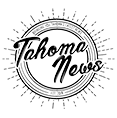Cursive’s Demise Amongst Tahoma High Students
Imagine if every year on your Birthday a mysterious benefactor sends you a card written in some foreign language with money. As you analyze the language you see similar letters to English but you are still perplexed. So after a short time, you give up trying to read the card and decide to read the numbers on the dollar bills.
To many teenagers, the annual Birthday card from grandma might as well be written in code because the forgotten art of cursive is not being taught in public schools anymore. But does cursive have more to teach us than how to read a grandparent’s birthday wishes?
A survey of Tahoma High School’s student population reveals that 49.6% can read or write in cursive fluently as compared to 50.3% who cannot. Yet, there was a drastic difference between seniors and new incoming freshman, 53.7% of seniors can read or write in cursive fluently compared to only 41.8% of freshmen. The decrease of cursive ability between the two grades shows a trend of the disappearing language in Tahoma students lives.
In an interview with Mr. Matt Tucker, English Department head at Tahoma High School, believes that cursive might still have a place in the school system, “There is something to be gained from learning it…something beautiful about the personalness of cursive,” said Tucker. He added that it would be senseless to teach it at the Highschool level, but that cursive is a huge part of American writing culture, mentioning how other countries like Japan have their traditional characters and ways of writing.
Mrs. Beverly Kesselring, the activity adviser of Cursive Club at Tahoma High School points out some benefits that cursive could have for students,“There’s research that shows cursive trains parts of the brain connected with critical thinking,” she said, citing sources from an educational summit titled “Handwriting in the 21st Century?”.
Looking further into the summit “Handwriting in the 21st Century?” there was some evidence found from a study done by Stephen Peverly that shows handwriting lightens a student’s cognitive load and “with consistent handwriting practice, the process involved becomes less demanding and more automatic, enabling students to devote a higher amount of neurological resources to critical thinking and thought organization.” Students who master the art of cursive are then better equipped when writing and taking notes in classes because they will have a “higher amount of neurological resources” to use when composing their ideas. Also, every student could benefit from a lighter “cognitive load” considering the eight period schedule at Tahoma requiring more information to be processed.
With a steady decline of cursive among students at Tahoma High School, the question now begins to be: are there some valuable aspects that are disappearing along with the handwriting?








Mrs. Ledford • Nov 2, 2017 at 9:08 am
Great article, Oleh. I especially loved the introduction to the article.